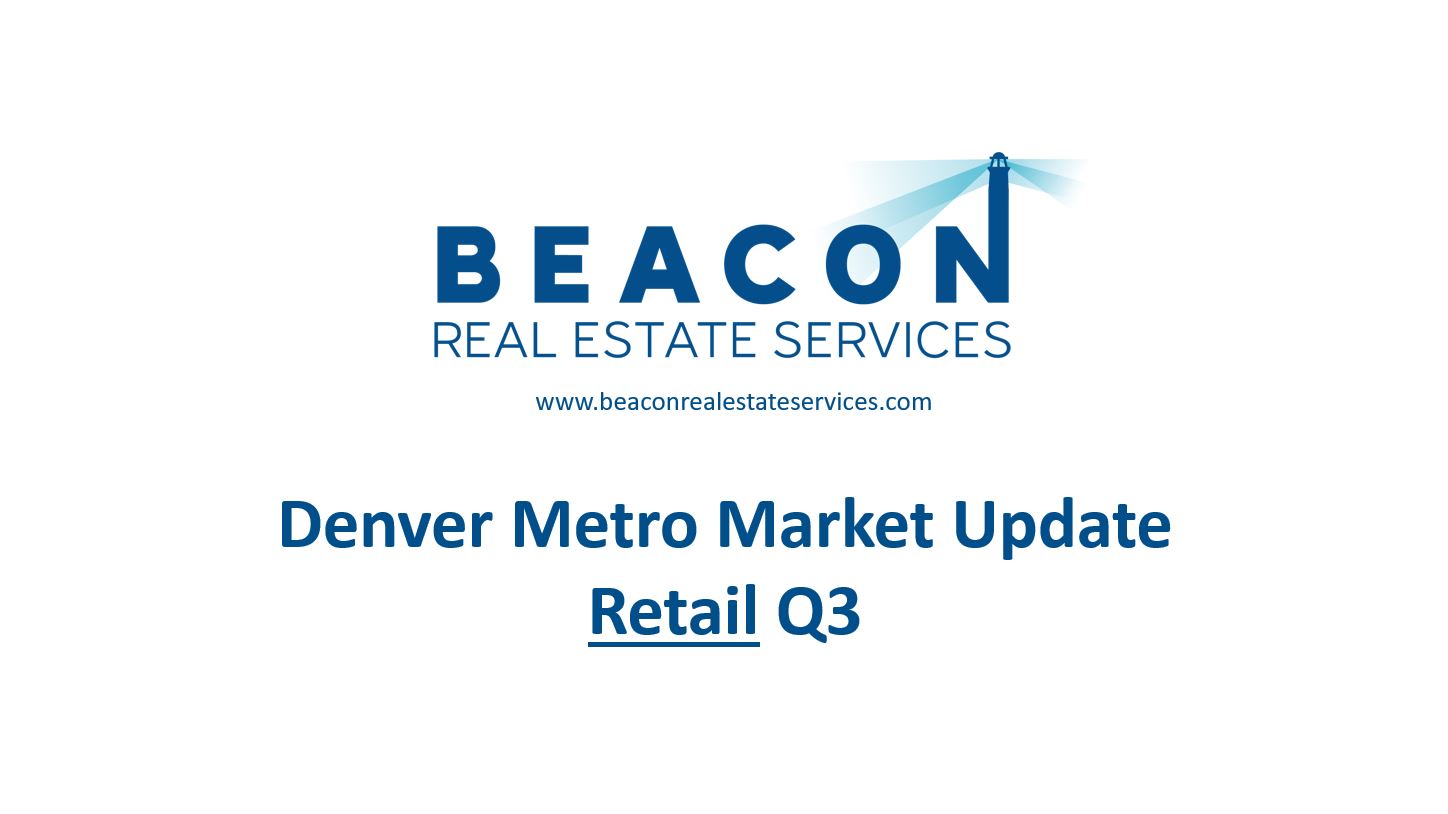This has been an interesting year for commercial retail properties! Many have talked for years about a brewing retail apocalypse. I am not sure apocalypse is the correct term, but the shutdowns have hammered many retail businesses. Many were barely hanging on before the pandemic, and now many are lining up for chapter 11 bankruptcy to restructure debts. Channel 7 reported on report from Yelp that 55% of Covid-19 business closures are permanent. Yikes!
Supply
There are currently 385 retail listings for sale in the Denver Metro Area. When comparing this supply to demand we have 6.4 months of inventory for supply.
Demand
Demand for buying retail multi-family properties is stronger than many would expect given how this article started. There were 181 closed sales in Q3, so the average absorption rate was 60.3 sales a month!
New Construction
Developers know that retail has been overbuilt since before the great recession, and new construction starts have been on a downward trend for the last few years. New construction starts in Q2 came in at a mere 21,560 SF, and Q3 came in at 147,864 SF. Although this is a good rebound compared to Q2, it does reflect a (59.1%) decrease from Q3 2019. The Denver Metro area has 11,711 buildings with a total square footage of around 158,098,500 SF. Developers currently have 783,942 SF under construction, so the retail market is set to expand by 0.5% (one half of one percent). This is the smallest growth factor of all commercial property types.
Vacancy Rates
Vacancy rates have been on the rise in Denver since Q4 2018, but they are still fairly reasonable at 5.25% as a market segment. When honing in on the different types of retail we start to see a more interesting picture. Power Centers are the big box stores in the back of the development, and they are running at 7.7% vacancy; whereas, malls are running at 42% vacancy. We will see what happens with malls as these large retailers work through their chapter 11 bankruptcies. Neighborhood centers are typically grocery stores and are running at 7.5% vacancy. Standalone strip centers are running at 6.1% vacancy.
Leasing
The average gross lease for retail is at $22.92 per SF per year. This is down from $23.12 per SF in Q2. This reflects about a 1% decline in rents between Q2 and Q3. It will be interesting to watch this and see what happens. Based on the amount of retail busines closures, I would expect to see downward pressure on rents.
The months on market for lease is 10.3 months which is a little lower than the 10.6 months reported in Q2. With that said, this is a fair amount higher than the low set in Q1 2019 of 9 months on market.
The big elephant in the room for retail is the negative net absorption. This is where more space is vacated than leased. Q3 set a new record at 592,836 SF. This puts us at a negative absorption of (873,361) SF for the year. To put this in perspective 2019 saw a decrease of (48,550) SF while 2018 saw a positive absorption of 2,135,851 SF!
Final Thoughts
Supply and demand for buying and selling retail properties is fairly balanced with 6.4 months of inventory. Developers have a very clear view on the state of the market, and they are doing modest developments. Vacancy rates are expected to rise, and lease rates are expected to have downward pressure for the foreseeable future. Time will tell!
Video
Here is a 2-minute video on the state of the Denver Retail Market.
